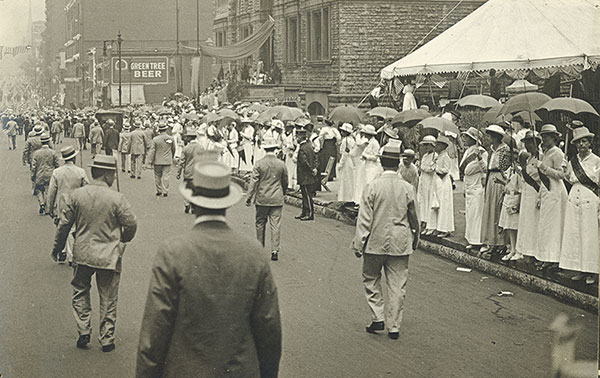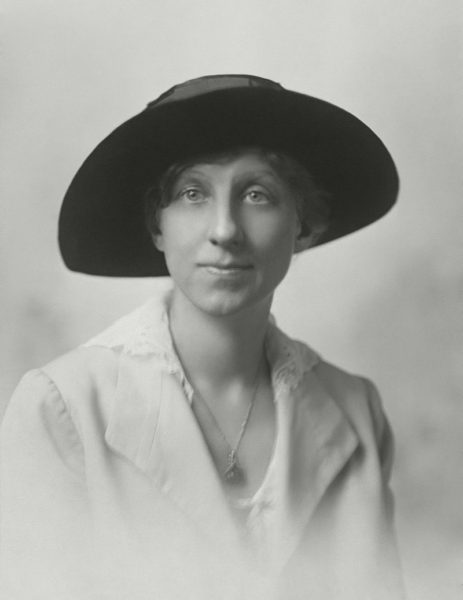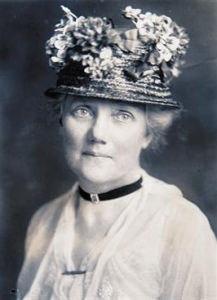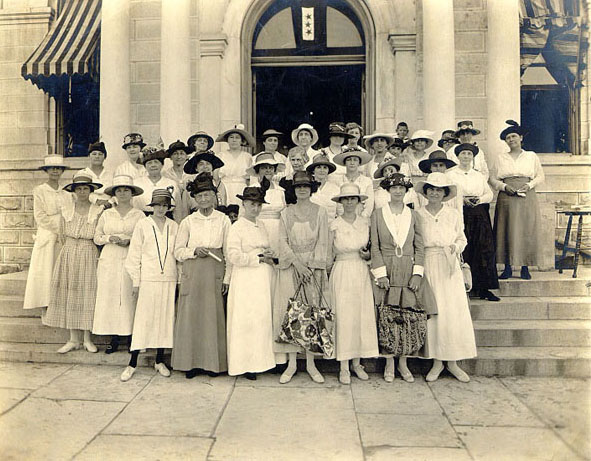Last updated: March 15, 2024
August 26, 2020 was Women’s Equality Day, a celebration of the centennial anniversary of the 1920 ratification of the Nineteenth Amendment to the Constitution that guarantees that, “The right of citizens of the United States to vote shall not be denied or abridged by the United States or by any State on account of sex.” This is part 3 of a four-part series, describing the many years of exhaustive effort channelled by American women into the suffrage movement that ultimately secured voting rights for women nationally.
 The beginnings of the National Woman’s Party (NWP) can be traced to the June 1916 Congressional Union convention in Chicago. The suffragists recruited women from states that had already gained the right to vote, and Harriot Stanton Blatch also joined the organization, bringing her supporters from the Women’s Political Union into the new party. The NWP was not a typical political party and it had a platform of only one plank that was the immediate passage of the 19th Amendment to the constitution to achieve universal women’s suffrage.
The beginnings of the National Woman’s Party (NWP) can be traced to the June 1916 Congressional Union convention in Chicago. The suffragists recruited women from states that had already gained the right to vote, and Harriot Stanton Blatch also joined the organization, bringing her supporters from the Women’s Political Union into the new party. The NWP was not a typical political party and it had a platform of only one plank that was the immediate passage of the 19th Amendment to the constitution to achieve universal women’s suffrage.
In the same month, the Democratic National Convention was held in St. Louis to nominate Woodrow Wilson for a second term as President. Approximately 3000 suffragists, holding yellow umbrellas and wearing white dresses and “votes for women” sashes, lined the street so that the convention delegates needed to walk past them to get to the convention hall.
It was at this point that the effects and influence of the militant wings of the British suffrage efforts began to shape the moment. Starting on January 10, 1917, the NWP began sponsoring a group that was nicknamed the Silent Sentinels, the first political activists to picket at the White House. Although the president has no formal role in ratifying a constitutional amendment, Alice Paul and the NWP felt that his endorsement would improve their chances for passage of the amendment in the House and Senate. They addressed  President Wilson specifically by name on their banners and were tenacious in their demand for gender equality and women’s suffrage. One question on their banners, “MR. PRESIDENT – HOW LONG MUST WOMEN WAIT FOR LIBERTY?” was derived from a quote attributed to Inez Milholland who repeated it many times during her 1916 tour to petition for help from women who had already gained the right to vote. How long must women wait for liberty?
President Wilson specifically by name on their banners and were tenacious in their demand for gender equality and women’s suffrage. One question on their banners, “MR. PRESIDENT – HOW LONG MUST WOMEN WAIT FOR LIBERTY?” was derived from a quote attributed to Inez Milholland who repeated it many times during her 1916 tour to petition for help from women who had already gained the right to vote. How long must women wait for liberty?
Mabel Vernon (1883-1975) was a key organizer of the Silent Sentinels, responsible for scheduling volunteers to ensure that the picket line was held in a continuous 24 hour vigil six days a week. She  also served as secretary to the National Women’s Party from 1910 to 1920. It is said that President Wilson may have initially been bemused by the Silent Sentinels and waved or tipped his hat as he drove through the gates. However, he was generally unresponsive to the suffragists, who were harassed and insulted by the public, as the activists stood strong in silence. When arrested, the women often chose to serve time in prison instead of paying fines to show commitment to their cause and to keep publicity for the suffrage movement high. The feminist activists also went to jail in protest, because they believed that they were simply exercising their constitutional right to assemble.
also served as secretary to the National Women’s Party from 1910 to 1920. It is said that President Wilson may have initially been bemused by the Silent Sentinels and waved or tipped his hat as he drove through the gates. However, he was generally unresponsive to the suffragists, who were harassed and insulted by the public, as the activists stood strong in silence. When arrested, the women often chose to serve time in prison instead of paying fines to show commitment to their cause and to keep publicity for the suffrage movement high. The feminist activists also went to jail in protest, because they believed that they were simply exercising their constitutional right to assemble.
When the United States entered World War I in April 1917, some women paused their women’s suffrage efforts, but the Silent Sentinels continued their picketing and were severely criticized for continuing their protest. Using President Wilson’s words against him, the women asserted that they were upholding their constitutional right to assemble in protest for their representation in democracy. They carried banners that read, “THE TIME HAS COME TO CONQUER OR SUBMIT. FOR US, THERE IS BUT ONE CHOICE. WE HAVE MADE IT.” This was a direct quote from President Wilson, who was referring to the U.S. war effort.
By June 2017, tolerance of the activists began to wear down and led to arrests of the protestors. Over the next two years, close to 2000 suffragists participated in the White House pickets, with around 500 women arrested and 168 women incarcerated. The women who were sent to prison were exposed to unsanitary conditions and sometimes beaten. Also, they were force fed when they went on hunger strikes to protest for treatment as political prisioners.

Iris Calderhead (1889-1966) was a NWP organizer who was the daughter of William Calderhead, a lawyer and politician who served as a US Representative to Congress. She received a degree in English from the University of Kansas in 1910 and pursued graduate studies at Bryn Mawr from 1910 to 1913. Calderhead became connected with the Congressional Union and, in 1915, was assigned to organize their exhibit at the Panama–Pacific International Exposition. In June 1917, Calderhead was arrested at the Smithsonian Institution, where she and Elizabeth Stuyvesant intended to display a women’s suffrage banner during a visit by President Woodrow Wilson. Later, on July 14, 1917, she picketed the White House with the Silent Sentinels and was arrested. She served three days at the Occoquan Workhouse, a District of Columbia facility for non-violent offenders serving short sentences, where inmates were expected to work in agriculture and factory production.
On November 14, 1917, known as the “Night of Terror,” Superintendent Raymond Whittaker of the Occoquan Workhouse, ordered guards to violently  abuse the suffragists who had been jailed for obstructing traffic. Lucy Burns was brutally beaten, chained awkwardly to her cell bars and left for the night. Dora Lewis (1862-1928) was thrown into her cell in the dark, smashing her head against an iron bed, causing her cellmate Alice Cosu to suffer a heart attack. Dorothy Day (1897-1980,) who later co-founded the Catholic Worker Movement, was repeatedly beaten across the back of an iron bench. Some Americans, who read newspaper articles about how the women were being treated, began to show more support for the suffrage movement. On November 27 and 28, all of the protesters were released, including Alice Paul, who had been incarcerated for five weeks.
abuse the suffragists who had been jailed for obstructing traffic. Lucy Burns was brutally beaten, chained awkwardly to her cell bars and left for the night. Dora Lewis (1862-1928) was thrown into her cell in the dark, smashing her head against an iron bed, causing her cellmate Alice Cosu to suffer a heart attack. Dorothy Day (1897-1980,) who later co-founded the Catholic Worker Movement, was repeatedly beaten across the back of an iron bench. Some Americans, who read newspaper articles about how the women were being treated, began to show more support for the suffrage movement. On November 27 and 28, all of the protesters were released, including Alice Paul, who had been incarcerated for five weeks.
In the meantime, women had been gaining suffrage at various levels across the country. However, by the end of 1917, only thirteen states and territories had granted women a right to vote at all levels, including: Wyoming (1869,) Utah (1870,) Colorado (1893,) Idaho (1896,) Washington (1910,) California (1911,) Arizona, Kansas, and Oregon (1912,) Alaska (1913,) Montana and Nevada (1914,) and New York (1917.) Some other states had granted limited or local suffrage to women. For example, in 1913, llinois granted municipal and presidential, but not state suffrage to women. And in 1918, the Texas State Legislature passed a law that enabled Texas women to vote, but only in primary elections. The photo below and to the left, shows a group of Travis County (Austin area) women who were registering to vote for the first time. Progress was being made, but it would still  take another two years for the Nineteenth Amendment to be finally passed through Congress and ratified by 75% of the states.
take another two years for the Nineteenth Amendment to be finally passed through Congress and ratified by 75% of the states.
Please continue to part four of this series on the women’s suffrage movement in the United States.
UPDATE: This blog post was updated on March 15, 2024 to include a link to part four of this series and to make minor editorial changes.
Reference 1: “Confrontations, Sacrifice, and the Struggle for Democracy,” Library of Congress.
Reference 2: “Hear Us Roar: Victory, 1918 and Beyond,” Library of Congress.
Reference 3: Biographical Sketch of Alice Cosu, written by Sarah Kirksey. Included in Online Biographical Dictionary of Militant Woman Suffragists, 1913-1920, Database assembled and co-edited by Thomas Dublin and Kathryn Sklar, Alexander Street Press, 2015.
Reference 4: Iris Calderhead, Wikipedia, https://en.wikipedia.org/wiki/Iris Calderhead.
Reference 5: National Woman’s Party Protests During World War I, National Park Service, September 2020.
Reference 6: https://www.nps.gov/articles/national-womans-party-protests-world-war-i.htm
Image 1: Women suffragists protesting at 1916 Democratic Convention in St. Louis, Bryn Mawr College Library, Bryn Mawr, Pennsylvania via Wikimedia Commons, public domain, 1916.
Image 2: Women suffragists picketing in front of the White House, Wikimedia Commons, public domain, 1917.
Image 3: Mabel Vernon, Wikimedia Commons, public domain, circa 1917.
Image 4: Iris Calderhead, Wikimedia Commons, public domain.
Image 5: Dora Lewis, Harris & Ewing via Library of Congress and Wikimedia Commons public domain, circa 1910-1920.
Image 6: Travis County Women Register to Vote, Wikimedia Commons, public domain, 1918.















Leave a Reply
Join the conversation by submitting a comment to this blog post below.